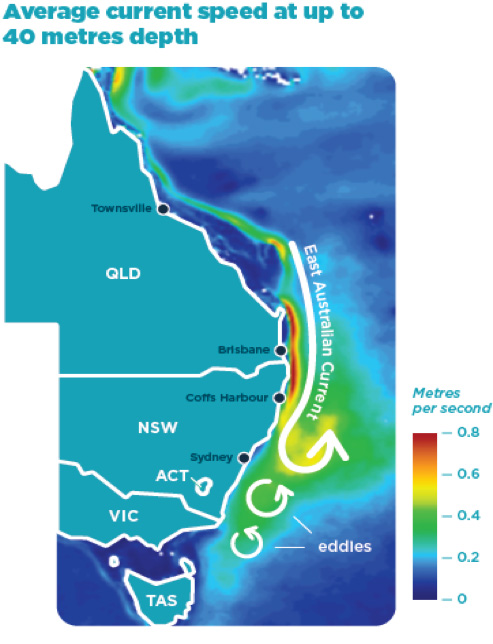What is ocean energy?
There are four main types of renewable energy from the ocean:
- Wave is the conversion of ocean swells and is strongest in trade winds.
- Tidal uses potential energy from changes in sea level, and kinetic energy from the horizontal motion of water. It is stronger near the Equator.
- Ocean thermal is a heat exchange process that converts the temperature difference between warm surface waters and cooler, deeper waters.
- Ocean current is a kinetic energy produced from the continuous motion of large ocean currents, such as the East Australian Current.
Ocean energy uses
Ocean energy can be used to generate electricity. One way it can be harnessed is by using a floating buoy, platform or submerged device (for wave, tidal and ocean current energy). Another way is to use a heat exchange system for thermal energy. Both systems are attached to a hydraulic system or turbine and combined with an electrical generator. While wave and tidal technologies are more advanced, both systems are still in developmental stages.
NSW ocean energy resources
At the moment, the potential for wave, tidal and ocean thermal energy in NSW is quite low, but as the technology develops it may grow. The East Australian Current flows as a fast, narrow jet of water past northern NSW, offering exciting possibilities for ocean current energy, but as it continues south the flow weakens into swirling circular currents.
NSW ocean energy future
The ocean’s current could be a valuable energy asset in NSW. The predictability of ocean energy, combined with easy access to the electricity grid along the state’s coastline, make it an attractive prospect. However, the future of ocean energy will rely on advances in technology and a better understanding of its environmental impacts.
